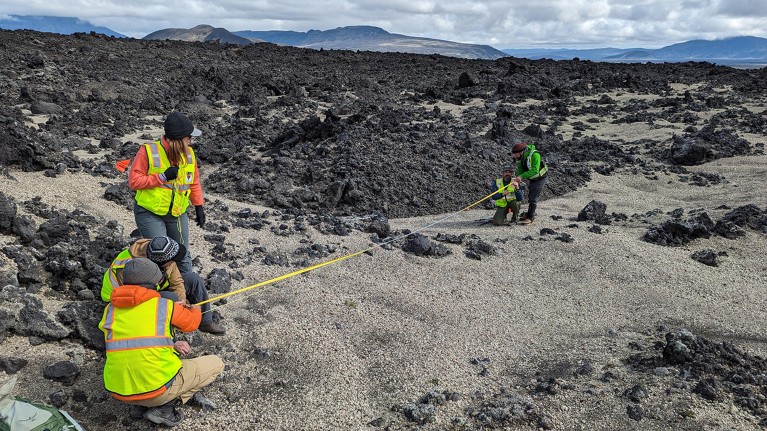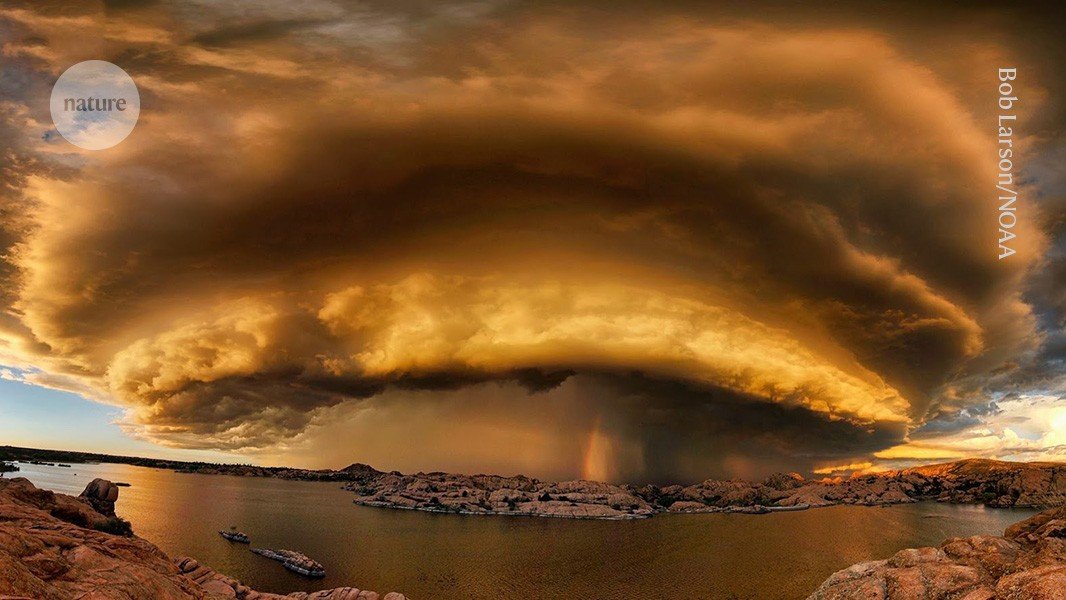Preliminary copies of some of the US government’s spending plans suggest that President Donald Trump’s administration intends to slash climate and space science across multiple agencies.
At risk is research that would develop next-generation climate models, track the planet’s changing oceans, and explore the Solar System. NASA’s science budget for the fiscal year 2026 would be cut nearly in half, to US$3.9 billion. The US National Oceanic and Atmospheric Administration (NOAA), which monitors Earth’s climate and makes weather forecasts, would have its 2026 budget cut by 27%, to $4.5 billion. The leaked documents containing this information were sent by the White House to federal agencies last week; they were reported by other media outlets and obtained by Nature.
‘One of the darkest days’: NIH purges agency leadership amid mass layoffs
Although the proposed cuts aren’t final, they have alarmed scientists and science advocates alike. “We’re talking about a wholesale dismantling of NASA’s scientific fleet and the pipeline of future missions,” says Casey Dreier, chief of space policy for the Planetary Society, an advocacy group in Pasadena, California. “Trump’s budget plan for NOAA is both outrageous and dangerous,” says a statement released by Zoe Lofgren, a member of the US House of Representatives from California who is the ranking Democrat on the House Committee on Science, Space, and Technology. “This budget will leave NOAA hollowed out.”
“No final funding decisions have been made,” says Alexandra McCandless, a spokesperson for the US Office of Management and Budget. The proposed cuts come as Trump’s team has tried to slash the size of the US government, firing federal workers en masse and cutting programmes purportedly in the name of government efficiency.
Here, Nature looks at some of the programmes and projects on the chopping block in the documents.
Crucial climate science
NOAA’s Office of Oceanic and Atmospheric Research (OAR), which funds numerous scientific missions, including climate modelling, cloud monitoring, and hurricane forecasting, would be slashed by 74%, to $171 million. OAR is the agency’s main research arm, with 11 laboratories and 16 cooperative institutes that collaborate with scientists at various universities; the budget proposal would defund any of them working on climate, weather or the ocean. The budget would also terminate six regional centres that collect climate data and provide guidance about weather and climate for the areas they serve. In total, the cuts would eliminate OAR as an independent office and disperse remaining activities to other parts of the agency. For many scientists, it’s a sign that the Trump administration is planning to turn its back on research that is needed to help understand long-term climate and environmental threats. “This is a huge threat to research at NOAA, but also to the safety and economic security of the American public,” says Craig McLean, a former assistant administrator for research at NOAA.
A next-generation space telescope
The Hubble and James Webb space telescopes, iconic for their views of the cosmos, won’t last forever. And now, their successor could be in trouble. The $4.3-billion Nancy Grace Roman Space Telescope has nearly been completed at NASA’s Goddard Space Flight Center in Greenbelt, Maryland, but Trump’s preliminary proposal would cancel all funding for it, as well as for many other Goddard projects. Trump, a Republican, tried repeatedly during his first term as president, from 2017 to 2021, to eliminate funding for the Roman telescope, but the US Congress always ensured that the funding wasn’t touched. The same could happen this time: “I will fight tooth and nail against these cuts,” said Chris Van Hollen, a Democratic senator from Maryland whose district includes the Goddard centre and who is the ranking member of the congressional spending committee that oversees NASA.
Earth-observing satellites
Trump’s proposals would cancel next-generation Earth-observing satellites at both NASA and NOAA. At NASA, the Earth-science budget would be cut in half, to just over $1 billion; that would almost certainly derail efforts to launch a fleet of new satellites to monitor variables crucial to weather and climate forecasting, including aerosols, clouds, and changes such as sea-level rise and droughts. At NOAA, preliminary plans call for the cancellation of a programme to build and launch weather satellites in geostationary orbits, which is a backbone of US weather-forecasting efforts. Trump would also remove climate instruments on future weather satellites, and end the longstanding agreement through which NASA launches NOAA’s weather satellites.

And international team of researchers measure rock features in Iceland in 2023 to help test NASA’s VERITAS probe — a spacecraft meant to launch in 2031 and map the surface and interior of Venus. This mission is under threat from the Trump team’s proposed budget cuts.Credit: NASA/JPL-Caltech
Missions to Venus
Among the proposed cuts at NASA are two missions to the planet Venus, which NASA has not sent a spacecraft to since 1989. The DAVINCI mission would send a probe into the thick Venusian atmosphere, while the VERITAS mission would map its surface and interior using radar and other technologies. Planetary scientists have welcomed both as long-overdue contributions to studying Earth’s nearest neighbour, which holds clues to the early evolution of the Solar System and has tantalizing, perhaps life-friendly chemistry in its clouds. Both missions are targeted for a launch in 2031 and meant to each cost less than $500 million. But delays have contributed to mounting expenses; one estimate suggests that DAVINCI will cost $1.2 billion or more.





